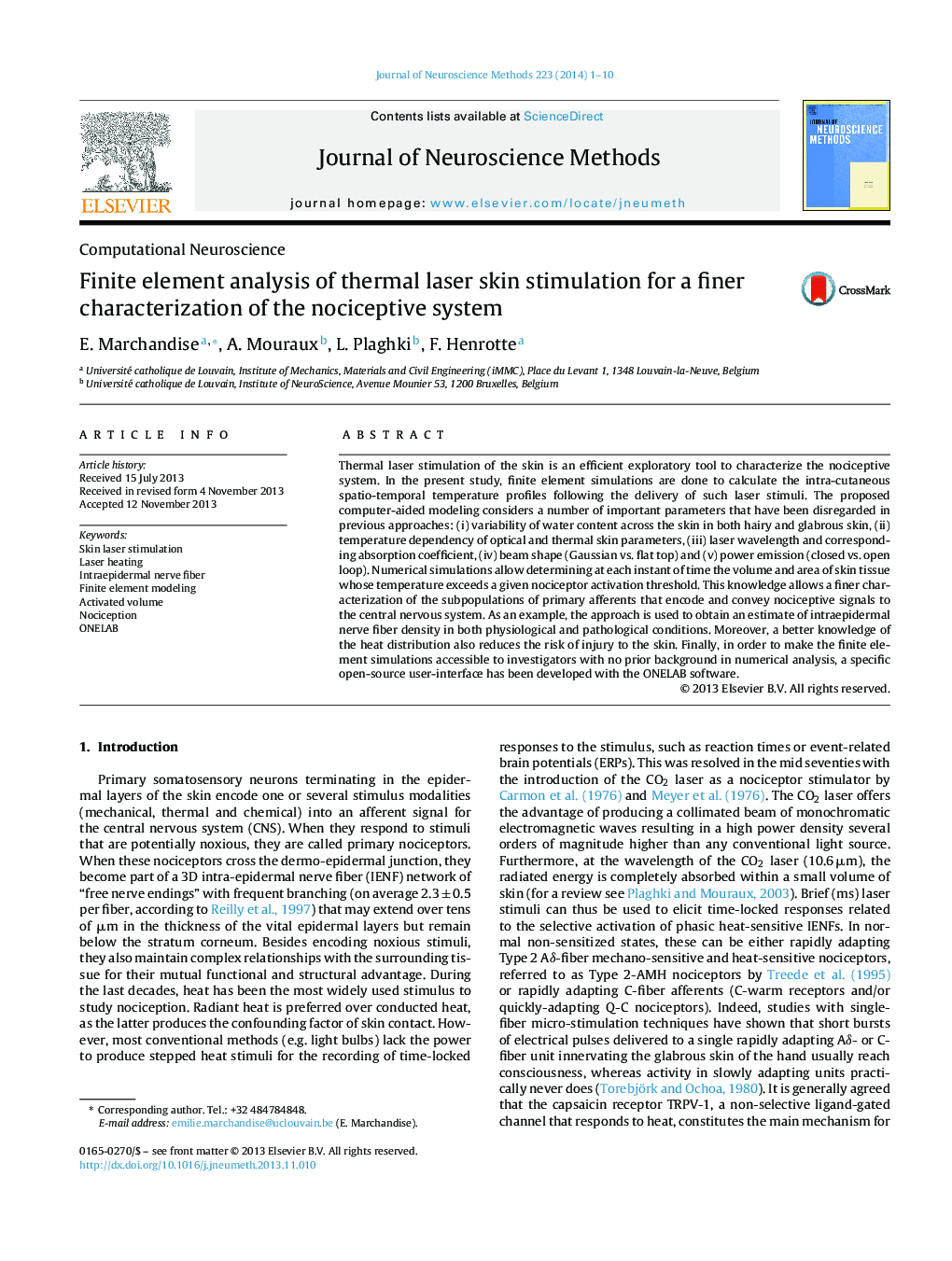| Article ID | Journal | Published Year | Pages | File Type |
|---|---|---|---|---|
| 4334968 | Journal of Neuroscience Methods | 2014 | 10 Pages |
Abstract
Thermal laser stimulation of the skin is an efficient exploratory tool to characterize the nociceptive system. In the present study, finite element simulations are done to calculate the intra-cutaneous spatio-temporal temperature profiles following the delivery of such laser stimuli. The proposed computer-aided modeling considers a number of important parameters that have been disregarded in previous approaches: (i) variability of water content across the skin in both hairy and glabrous skin, (ii) temperature dependency of optical and thermal skin parameters, (iii) laser wavelength and corresponding absorption coefficient, (iv) beam shape (Gaussian vs. flat top) and (v) power emission (closed vs. open loop). Numerical simulations allow determining at each instant of time the volume and area of skin tissue whose temperature exceeds a given nociceptor activation threshold. This knowledge allows a finer characterization of the subpopulations of primary afferents that encode and convey nociceptive signals to the central nervous system. As an example, the approach is used to obtain an estimate of intraepidermal nerve fiber density in both physiological and pathological conditions. Moreover, a better knowledge of the heat distribution also reduces the risk of injury to the skin. Finally, in order to make the finite element simulations accessible to investigators with no prior background in numerical analysis, a specific open-source user-interface has been developed with the ONELAB software.
Related Topics
Life Sciences
Neuroscience
Neuroscience (General)
Authors
E. Marchandise, A. Mouraux, L. Plaghki, F. Henrotte,
